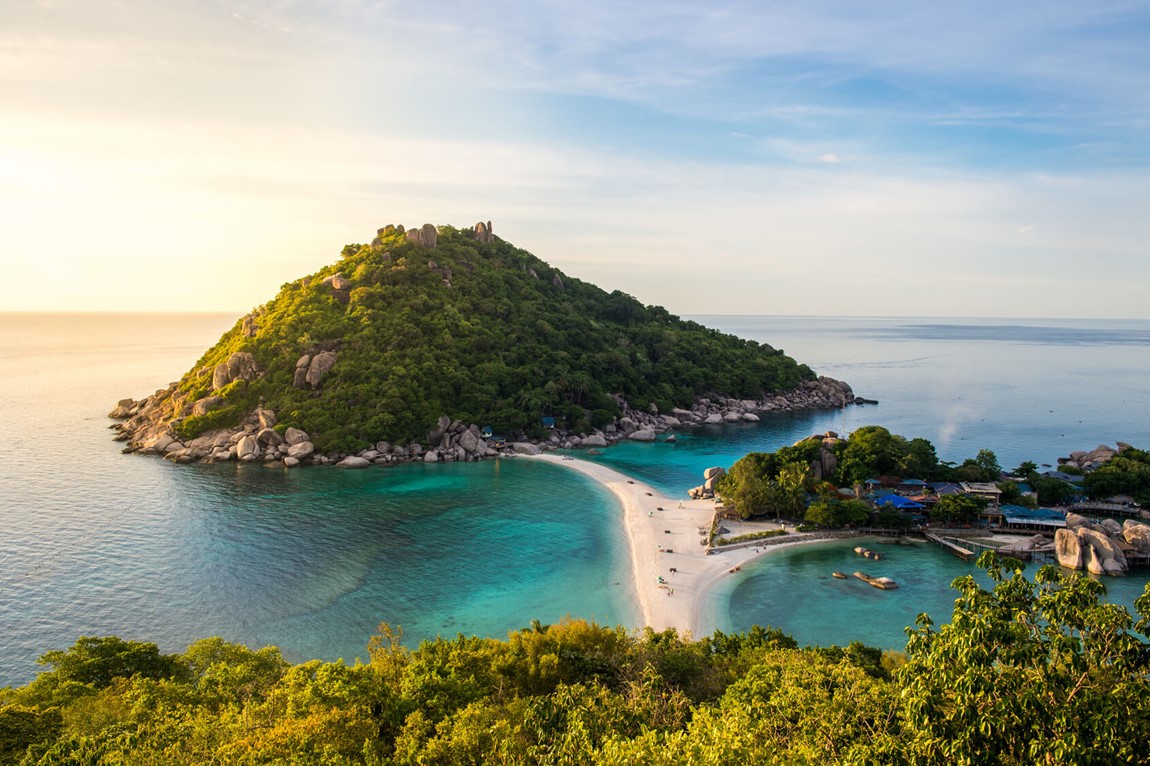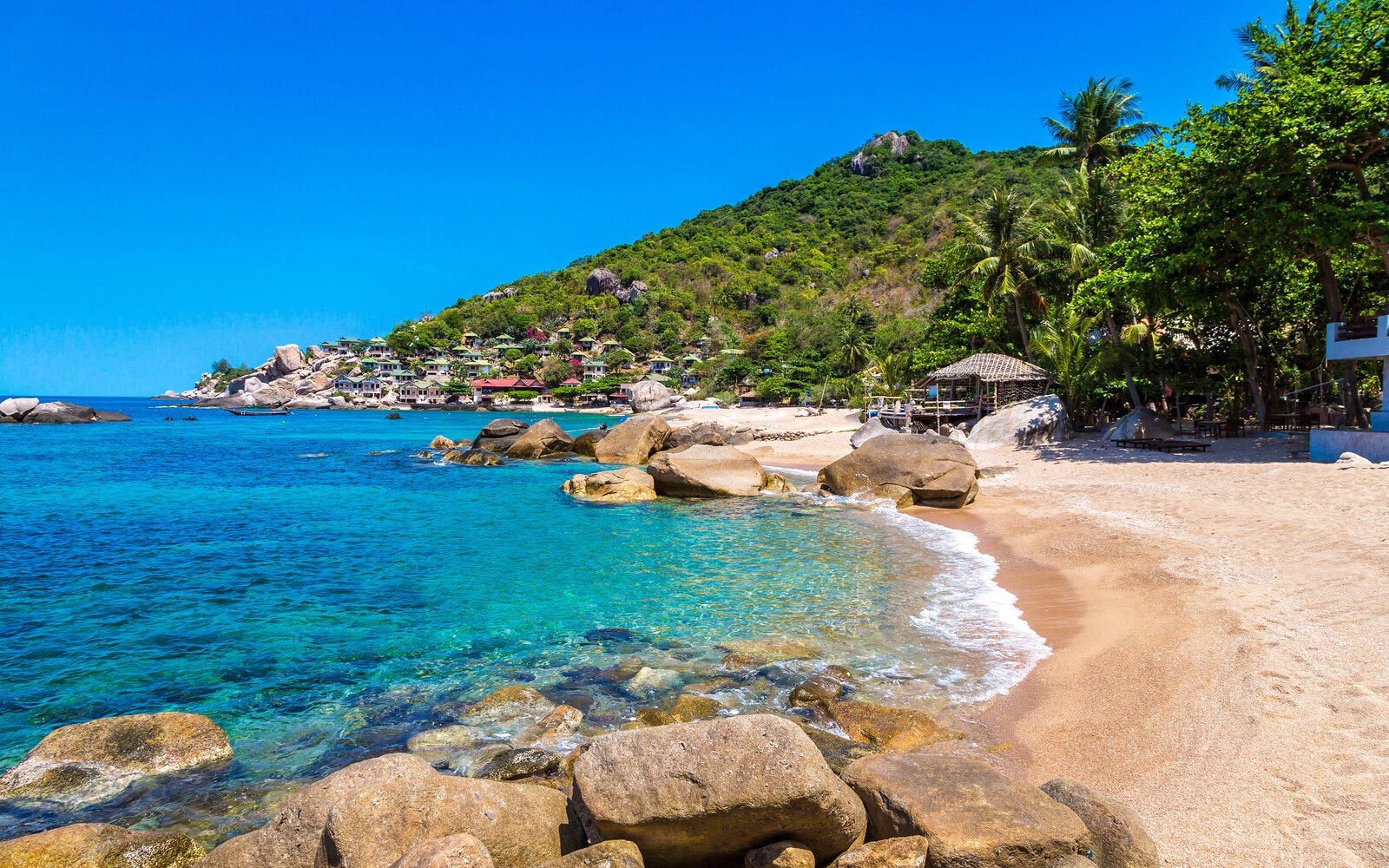No Products in the Cart


But the epitome of snorkeling must-sees in Thailand is the Similan Islands, 60 miles (100km) to the north-east of Phuket, with nine islands that have each been listed as natural reserves.
From gentle giant black tip sharks and mystical manta rays to parrotfish and dazzling corals, Thailand is a haven for snorkeling enthusiasts. And we’ve put together a guide to our favorite spots to get you started.

Source: Thailand’s Top 5 Snorkeling Spots
Three islands connected by just two strips of white sand, Koh Nang Yuan features a beach that reveals itself at low tide and disappears beneath the waves when the tide rolls in. Lagoons filled with multi-shades of clear blue water, Koh Nang Yuan is the perfect place to spend a tranquil day of snorkeling in the Asian sunshine discovering clownfish in their anemones, butterflyfish, clams and shoals of parrotfish among the granite rocks. .

Source: KO TAO
A tiny tight-knit island, littered with beachfront dining, shops, and dramatic fire shows, is a snorkeling-lovers' haven. Explore the depths of several of the island’s popular sites including Shark Bay, where gentle-giant black-tip reef sharks, some as large as six-feet long, swim freely in their name-sake waters! Plan your visit between 7 & 10 am, the black tips’ favorite time to cruise around the bay. But fear not, because these timid creatures may look intimidating but they’re as friendly as they are magnificent!

Also known as Koh Yung, Mosquito Island is the most remote of the Phi Phi Islands, located approximately 3 miles off the northern tip of Koh Phi Phi Don. On its east side, a narrow rocky cliff, fringed by a coral reef, can be reached from Ko Phi Phi Don by longtail boat. Snorkeling stops on the reef bordering the island, usually included in most tours leaving from Ko Phi Phi, include Maya Bay, Monkey Beach and Bamboo Island.
Sadly, the coral reef is badly damaged so the normally vibrant seabed has more limited marine life than usual, even if some coral areas are still quite healthy. But you can still spot a good variety of fish like the copper band butterflyfish, Moorish Idol, surgeonfish, and parrotfish. Moray eels can also be spotted in the reef’s cracks and the reef flat is home to colorful giant clams. So be sure to bring your waterproof camera when visiting Mosquito Island to capture great shots of their fluorescent mantles.

Source: MAYA BAY, KO PHI PHI
With its sheer green cliffs overlooking the Andaman Sea and reefs adorned with hundreds of multi-colored fish, Maya Bay offers some of the best underwater photography opportunities in Thailand. A popular snorkeling spot, expect to spot wrasse, damselfish, butterflyfish, and several species of anemonefish. 20 Minutes by longtail boats from Ko Phi Phi Don and 45 minutes by speedboat from Phuket, the most popular area is on the north side of the bay along the cliffs. You can also reach the coral and rocky areas, just 150 yeards from the beach, where the underwater life is more abundant.
Two species of clownfish are easy to spot, including the pink skunk clownfish and the ocellaris clownfish. Both are found in the large sea anemones that live on the reef. Other common species include the sergeant major, which swims in large groups near the surface, butterflyfish, parrotfish, and colorful giant clams. Maya Bay was closed from 2018 until this year to allow for the coral to recover. Since it’s opening, the friendly giant blacktip reef sharks are back in the bay.

Source: TONOTE BAY, KOH TAO

Located on the east coast of Koh Tao and surrounded by lush hills, Tanote Bay is a remote and picturesque beach, one of the most untouched on the island. The little bay, sheltered and full of marine life, is an idyllic snorkeling destination. There are two main ways to reach Tanote Bay. The first option is to reach the beach by road near the pier at Mae Haad town. The second option is by boat tour.
The water is quite shallow near the beach then quickly drops off to 9-12 feet. Sea life is most abundant along the giant boulders in the middle of the bay where fish, giant clams, Christmas tree worms, and sea anemones inhabited by pink skunk clownfish find shelter. In the cracks, you may spot a small moray eel, wrasses, rabbitfish, and parrotfish.
An island paradise, Thailand has some of the most magnificent scenery in Asia, delicious dining options, and a multitude of snorkeling spots, so come prepared with a great underwater camera and be ready for some of the best photo opps on earth.